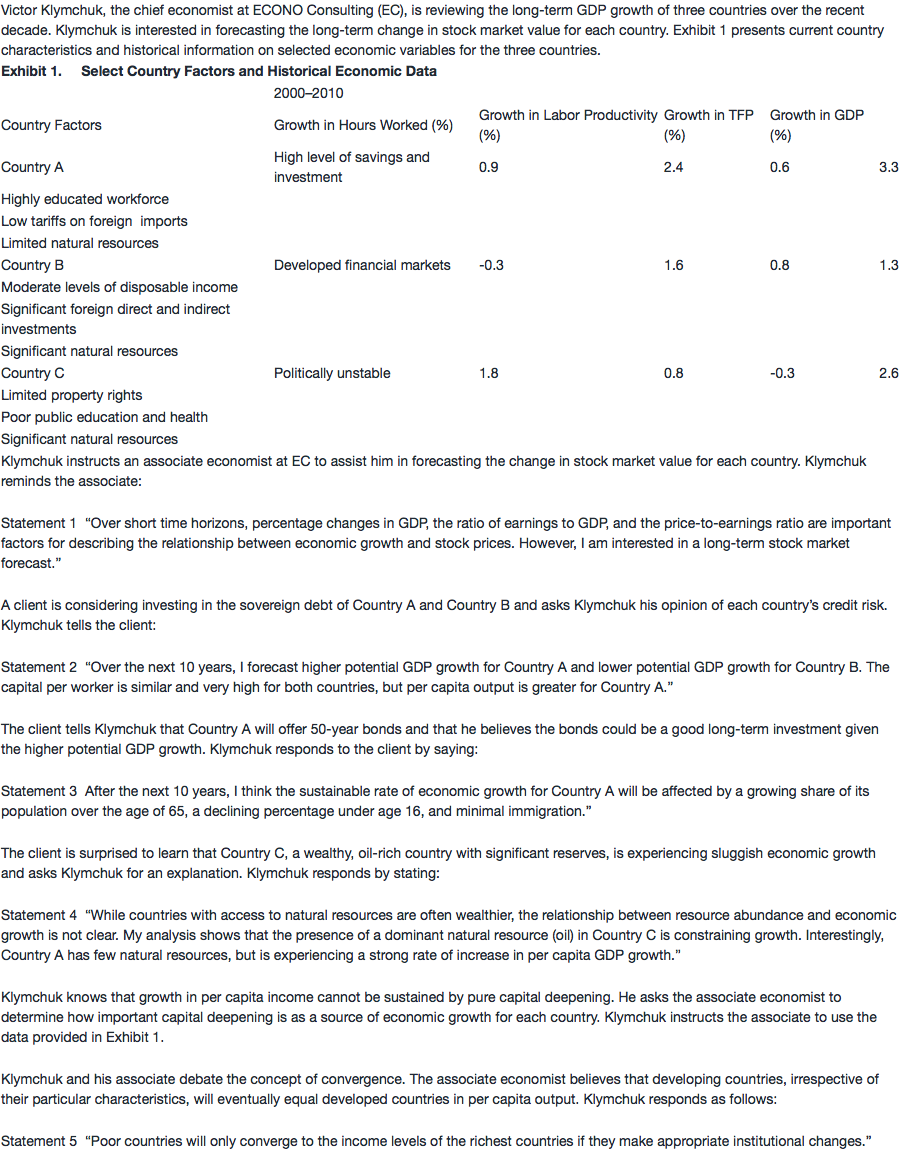NO.PZ201512020800000407
问题如下:
7. Based upon Statement 4 and Exhibit 1, the sluggish economic growth in Country C is least likely to be explained by:
选项:
A.limited labor force growth.
B.export driven currency appreciation.
C.poorly developed economic institutions.
解释:
A is correct.
Country C is an example of a country endowed with an abundant natural resource yet experiencing slow economic growth. While labor force growth is an important source of economic growth, it is the least likely explanation of the sluggish economic growth in Country C. As shown in Exhibit 1, growth in total hours worked has accounted for most of Country C’s growth. Furthermore, export driven currency appreciation and poorly developed economic institutions are both likely causes of sluggish growth in countries with abundant natural resources.
考点:影响一国经济增长的因素
解析:注意到表一中该国劳动力工作小时增长的数字高达1.8,
这表明该国劳动力增长非常好,没有受到约束限制。因此A应该入选。
该国自然资源丰富,可能诱发“荷兰病”,即出口自然资源导致汇率升值抑制其工业的发展。
此外该国专利保护有限,教育医疗较差,这也表明其经济制度不够健全。所以B,C选项都会抑制其经济发展,在本题中都不应该入选。
1.表格中的growth in GDP,是指real GDP还是potential GDP?
2.我这样的解题思路有问题吗?
我解题时是把表格中的growth in GDP当作 growth rate in potential GDP,接着用labor productivity growth accounting equation(如下图),算出C国的growth in labor force是1.8%,1.8%相对AB二国来说是较大的,所以C国的劳动力增长并非limited。
- C国 growth rate in potential GDP:2.6%
- C国 long-term growth rate in labor productivity: 0.8%
- C国 long-term growth rate of labor force: 2.6%-0.8%=1.8%






 .
.